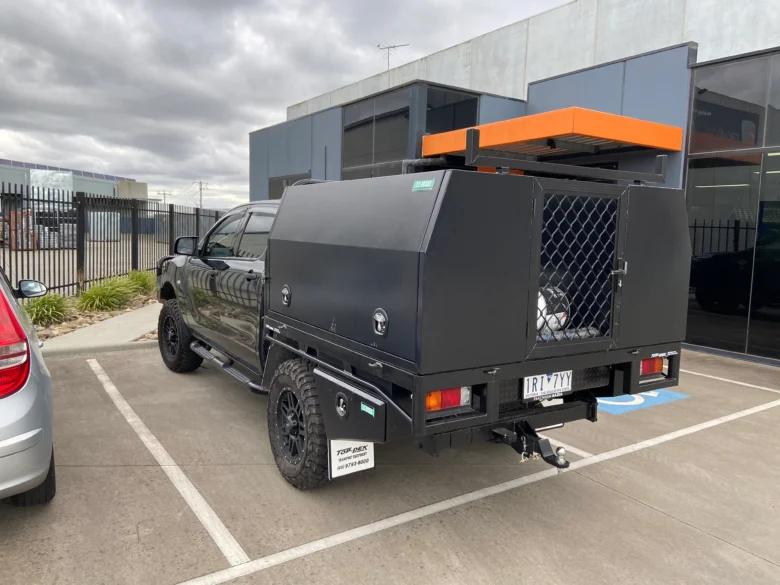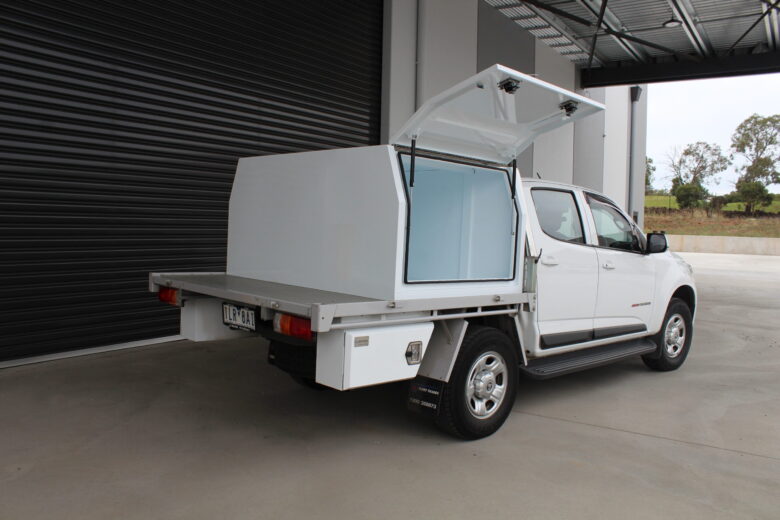Ute toolboxes are essential for tradespersons or DIY enthusiasts relying on their utility vehicles to securely transport and store their tools. These sturdy and durable storage solutions come in various materials, with steel being one of the most popular choices due to its strength and resistance to wear and tear. However, with a plethora of options available, choosing the right steel tool box can be overwhelming. This article explores the essential factors to consider for your specific needs.
Purpose and Usage

Consider your specific purpose and usage requirements when choosing. Think about the types of tools you will be storing, the nature of your work, and the environments you will be working in.
For example, if you work in industries such as construction or mining that involve heavy-duty tools and equipment, you will need a product that can handle the weight and withstand rugged conditions. On the other hand, if you are a DIY enthusiast with a smaller set of tools, a compact and lightweight one may suffice.
Size and Capacity
One of the first considerations when choosing is determining the appropriate size and storage capacity. Evaluate the volume of tools you need to store and consider future growth as well. A box that is too small may result in overcrowding and make it difficult to locate those when needed, while a huge one may take up unnecessary space in your vehicle.
Take measurements of the available space in your Ute and compare them with the dimensions of the products you are considering. Look for options offering multiple compartments, drawers, or shelves, providing better organisation and easier access. Adjustable dividers can also be useful to customise the storage space based on your specific requirements.
Construction and Durability

The construction and durability are crucial factors to ensure its longevityy and ability to withstand demanding conditions. Look for those made from high-quality steel, such as aluminium or stainless steel, as they offer excellent strength and resistance to corrosion. Aluminium is lightweight and ideal for fuel efficiency, while stainless steel is heavier but provides superior durability.
Consider the thickness of the steel used. Thicker steel generally indicates better sturdiness and resistance to impacts. Reinforced corners, edges, and lids add extra strength, ensuring it can withstand rough handling and adverse weather conditions.
Additionally, check the welding and construction quality. Look for smooth and sturdy welds that indicate a well-built product. Pay attention to the overall design and structural integrity, as it will determine the ability to withstand heavy loads and vibrations during transportation.
Security Features: Security is a crucial aspect when choosing, as it ensures the safety of your valuable tools. Look for products with robust locking mechanisms that provide excellent security. High-quality locks, such as stainless steel or heavy-duty locking systems, offer better resistance against theft and unauthorised access.
Consider additional security features like reinforced corners and pry-resistant designs, which make it more difficult for potential thieves to break into the box. Some may also have built-in security systems, such as lockable latches or tamper-proof mechanisms, to further enhance protection.
Weatherproofing: If your work often takes you into outdoor environments, choosing one that offers adequate weather resistance is essential. Look for products with features like rubber seals or gaskets that provide a tight seal, preventing moisture, dust, and debris from entering. A weather-resistant one will protect your valuable tools from rust and corrosion, extending their lifespan.
Additionally, consider whether they have a water drainage system. This feature allows any water that enters them to drain out, keeping your tools dry and preventing water accumulation.
Easy Accessibility: Easy accessibility is crucial to ensure efficient work processes. Look for products that provide convenient access to your tools. Sliding drawers, removable trays, or fold-down panels allow easy access to specific tools without having to rummage through the entire box. Consider the layout and organisation options within it and the presence of dividers or compartments for better segregation.
Gas struts are another helpful feature to consider. These struts keep the lid open while you work, preventing accidental closure and providing hands-free access to the tools inside the box.
Portability and Mounting Options: Portability becomes crucial if you require flexibility and often transport your equipment between different vehicles. Look for those with ergonomic handles or recessed grips for easy lifting and carrying. Furthermore, consider those with multiple mounting options to ensure a secure fit on your utility vehicle.
- Ergonomic Handles or Recessed Grips: When selecting a portable one, look for models that feature ergonomic handles or recessed grips. These design elements make lifting and carrying the product easier, especially when it is fully loaded with tools. Ergonomic handles distribute the weight evenly, reducing strain on your hands and providing a comfortable grip. Recessed grips, on the other hand, offer a flush surface, preventing any protrusions that may hinder transportation or storage.
- Multiple Mounting Options: If you frequently switch between different vehicles or need the flexibility to move it around, consider options with multiple mounting options. Bolt-on, clamp-on, or under-tray mounting systems provide secure attachment to your utility vehicle, ensuring that it remains in place during transit.
- Bolt-on mounting: This method involves using bolts to directly secure it onto the bed or chassis of the vehicle. It provides a sturdy and permanent attachment, making it suitable for those who do not need to remove it frequently.
- Clamp-on mounting: This option utilises clamps or brackets to secure it onto the vehicle’s bed rails. It offers a secure fit without the need for drilling or permanent installation. Clamp-on mounting is a convenient choice for those who require flexibility and the ability to remove or transfer it effortlessly.
- Under-tray mounting: Some come with under-tray mounting systems, which involve attaching the products beneath the vehicle’s tray or bed. This mounting option maximises storage space on the vehicle while keeping it protected and secure.
Conclusion

Choosing the right steel tool box is crucial for any tradesperson or DIY enthusiast. By carefully considering factors like purpose, size, construction, security features, weatherproofing, accessibility, and portability, you can find the perfect one to match your requirements and needs. Investing in a high-quality product will protect your valuable tools and enhance your efficiency and professionalism on the job. Take the time to evaluate your requirements and select a product that can serve you well for many years to come.

